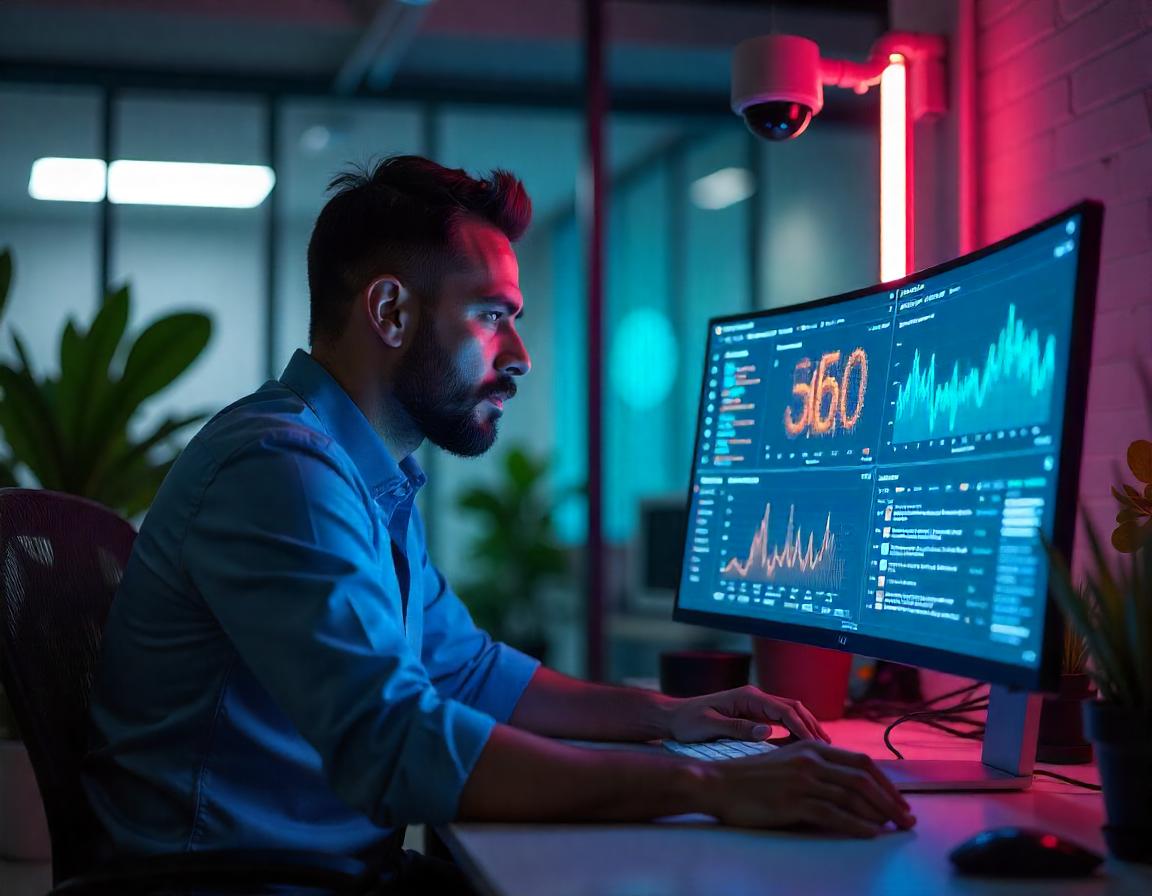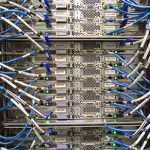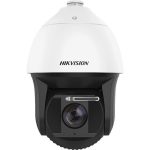CCTV (Closed-Circuit Television) systems have been around for decades, serving as a key tool for monitoring and securing public and private spaces. However, traditional CCTV systems have limitations. They rely heavily on human operators, and reviewing hours of footage or detecting suspicious behavior can be time-consuming, error-prone, and inefficient. False alarms, caused by harmless movements like leaves blowing or animals passing by, are also common in these systems.
Enter artificial intelligence (AI). AI is transforming CCTV surveillance by making these systems smarter, more efficient, and far more effective at detecting real threats while minimizing false alarms. In this article, we’ll explore how AI is revolutionizing CCTV surveillance, enhancing security, and reducing false alarms.
The Role of AI in CCTV Surveillance
Artificial intelligence, particularly machine learning (ML) and computer vision, is enabling CCTV systems to do much more than simply record footage. AI-powered CCTV can analyze video in real-time, recognize patterns, detect unusual activities, and distinguish between different objects and movements. Here’s how AI is being applied to CCTV systems:
- Automated Threat Detection Traditional CCTV systems rely on human operators to constantly monitor live video feeds, which can be tedious and prone to human error. AI changes that by automatically analyzing footage and detecting potential threats in real time. AI algorithms can be trained to recognize certain behaviors, such as unauthorized access, loitering, or aggressive actions, and alert security personnel when such activities are detected.
- Object and Person Recognition AI-powered CCTV systems use advanced object recognition algorithms to identify people, vehicles, and objects in video footage. This allows the system to differentiate between a human walking into a restricted area and an animal or vehicle passing by. This capability significantly reduces false alarms and ensures that security personnel are alerted only when necessary.
- Facial Recognition AI-enabled CCTV systems can also incorporate facial recognition technology, which can identify individuals in a crowd, compare their faces with a database of known individuals, and flag suspicious or unauthorized persons. This feature is especially useful in airports, stadiums, and other high-security environments where identifying potential threats in real time is crucial.
- Behavior Analysis AI can be trained to recognize certain patterns of behavior that may indicate suspicious activity. For example, loitering in a specific area, erratic movements, or someone leaving an object in a crowded space could trigger an alert. This predictive analysis enables security teams to respond proactively before an incident occurs.
- Real-Time Monitoring and Alerts With AI, CCTV systems can monitor video feeds 24/7, processing large volumes of footage and identifying potential threats in real-time. When a threat is detected, the system can instantly alert security personnel through notifications, emails, or alarms. This reduces the reliance on human operators and ensures that security teams can respond immediately to any suspicious activity.
Reducing False Alarms with AI
One of the most frustrating aspects of traditional CCTV systems is the high number of false alarms. Many surveillance systems trigger alarms due to non-threatening events, such as animals moving across the camera, changing weather conditions, or even lighting changes. These false alarms can be distracting, lead to alarm fatigue, and make it harder for security teams to focus on real threats.
AI dramatically reduces the number of false alarms by using smarter detection algorithms that can distinguish between harmless and potentially dangerous situations. Here’s how AI achieves this:
- Object Differentiation AI-powered CCTV systems can distinguish between different types of objects, such as humans, animals, and vehicles. For example, if a cat walks across the camera’s view, the system will recognize it as an animal, not a human, and avoid triggering an alarm. This ability to classify objects is key in reducing false positives.
- Environmental Awareness AI systems can be trained to understand environmental conditions. For instance, they can account for changes in lighting, wind, or weather, and avoid flagging events like leaves blowing or shadows moving across the camera. By recognizing these non-threatening events, AI prevents unnecessary alerts.
- Behavior-Based Detection Traditional motion detection systems often trigger alarms based on any movement in the camera’s field of view, without considering the context. AI changes this by analyzing the behavior of objects and people. For instance, AI systems can recognize when someone is walking normally versus someone exhibiting unusual or erratic behavior. This ensures that alarms are triggered only when a genuine threat is present.
- Learning from Feedback One of AI’s key strengths is its ability to learn and improve over time. Security teams can provide feedback to AI systems, marking certain events as false alarms or valid threats. The AI uses this feedback to refine its detection algorithms and further reduce false alarms. Over time, the system becomes more accurate and better able to detect real threats while ignoring harmless events.
Key Benefits of AI-Enhanced CCTV Systems
The integration of AI into CCTV systems brings several significant benefits that enhance security and improve operational efficiency.
1. Improved Accuracy and Efficiency
AI’s ability to analyze footage in real-time and detect threats with precision reduces the need for constant human monitoring. This allows security teams to focus on real incidents rather than spending time reviewing footage or responding to false alarms. AI-powered CCTV systems work around the clock without getting tired, ensuring that no suspicious activity is missed.
2. Enhanced Threat Detection
Traditional CCTV systems are passive—recording footage but not actively analyzing it. AI makes CCTV systems active participants in security operations, identifying potential threats as they happen and alerting security personnel immediately. This ability to provide real-time alerts improves response times and allows security teams to intervene before incidents escalate.
3. Cost Savings
AI reduces the need for large teams of security personnel monitoring multiple video feeds simultaneously. Fewer false alarms also mean fewer unnecessary responses, reducing the overall cost of running the surveillance system. Additionally, AI-enabled CCTV systems can automate certain security tasks, freeing up resources for more critical tasks.
4. Scalability
AI-powered CCTV systems can scale easily to accommodate large or complex environments. Whether you’re monitoring a small office or a large industrial complex, AI can handle vast amounts of video data, providing continuous coverage without compromising on performance.
5. Integration with Other Security Systems
AI-enhanced CCTV systems can integrate seamlessly with other security technologies, such as access control, intrusion detection, and alarm systems. This creates a unified security infrastructure where data from multiple systems can be analyzed and cross-referenced, improving overall security performance.
Real-World Applications of AI in CCTV
AI-powered CCTV systems are already being deployed across various industries, revolutionizing security and surveillance in real-world settings:
- Retail: In retail environments, AI-enhanced CCTV helps detect shoplifting, monitor customer behavior, and optimize store layouts. AI can also track foot traffic patterns to help retailers improve customer experiences and store management.
- Airports: Airports are using AI-powered CCTV to enhance security by identifying suspicious behavior, detecting unauthorized access, and using facial recognition to identify persons of interest in real-time.
- Smart Cities: Many cities are leveraging AI-enhanced CCTV systems for traffic monitoring, crowd management, and crime prevention. AI can help detect accidents, identify dangerous driving, or even alert authorities to unusual gatherings of people in public spaces.
- Healthcare: AI-powered CCTV in hospitals can enhance patient safety by monitoring for falls, detecting unauthorized access to restricted areas, and ensuring compliance with hygiene protocols.
- Industrial Sites: In industrial settings, AI-enhanced CCTV can detect hazards, ensure worker safety, and monitor compliance with safety regulations. For example, AI can identify when workers aren’t wearing proper safety equipment and alert supervisors.
The Future of AI in CCTV Surveillance
As AI technology continues to evolve, the capabilities of CCTV systems will only improve. In the near future, we can expect:
- Deeper Integration with IoT: AI will work more closely with Internet of Things (IoT) devices, enabling CCTV systems to gather data from a wide range of sensors and provide even more accurate threat detection.
- Autonomous Systems: AI-powered CCTV systems will become more autonomous, capable of making decisions and taking action (such as locking doors or notifying authorities) without human intervention.
- More Advanced Behavior Recognition: AI will become even better at recognizing complex behaviors, allowing CCTV systems to predict and prevent crimes before they happen.
- Enhanced Privacy Features: As facial recognition and other AI technologies advance, there will be more focus on protecting privacy, with systems being designed to balance security and personal privacy concerns.
AI is revolutionizing the world of CCTV surveillance by making systems smarter, more reliable, and far more efficient. With its ability to detect threats in real-time, reduce false alarms, and improve overall security, AI is transforming the way we monitor and protect our spaces. As this technology continues to advance, AI-powered CCTV systems will play an increasingly critical role in ensuring the safety and security of businesses, public spaces, and homes alike.
By leveraging AI, CCTV systems can provide better protection, reduce operational costs, and give security teams the tools they need to respond to real threats quickly and effectively. Whether you’re a small business owner or managing a large industrial facility, AI-powered CCTV offers the next generation of surveillance, ensuring that your security infrastructure is smarter, more adaptive, and ready for the future.





